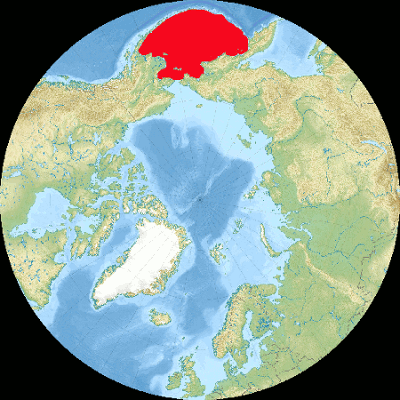
Circle the area on this map

B. Bering was born in Denmark but was serving in the Russian Navy as a navigator and map maker in 1728 when he became the first European to systematically explore the sea, sailing from the Pacific Ocean northward to the Arctic Ocean.
D. The lack of sea ice exposed coastal villages to flooding from the sea’s vicious winter storms. Valuable fish and crab populations are ultimately dependent on the spring bloom of phytoplankton triggered by the seasonal sea ice melt. Ice-free water absorbs more solar energy, warming the sea and delaying future ice freezing.
C. Most scientists believe that during the most recent ice age, sea level was low enough to allow humans to migrate east on foot from Asia to North America across what is now the Bering Strait. Other animals including megafauna migrated in both directions. This is commonly referred to as the Bering Land Bridge.
D. Russians hunting seals for fur flocked to the islands and later to Alaska, giving Russia a foothold in North America. An estimated 2.5 million fur seals were killed from 1786 to 1867, when the United States bought Alaska from Russia.